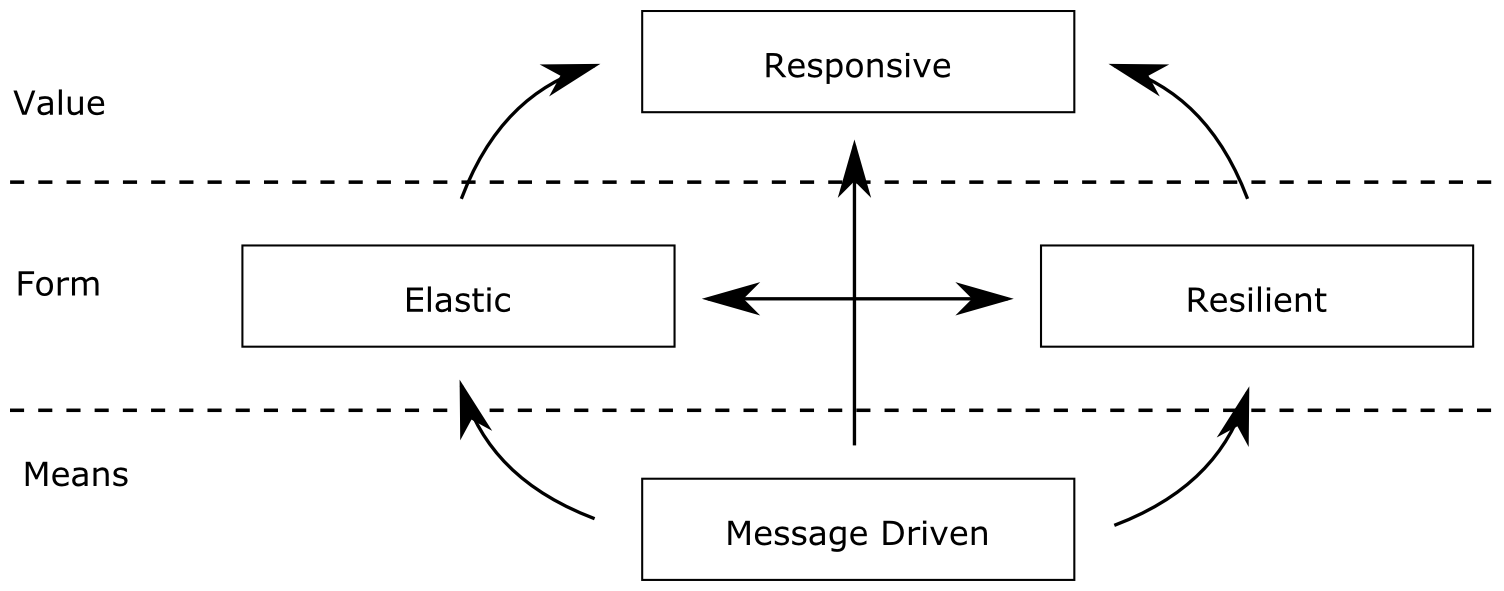This book will cover many aspects on reactive programming. But an important thing to be aware of is that using reactive programming does not mean implementing a reactive system. A reactive system is much more than implementing a component with asynchronous and reactive programming. These are two notions that may be easily mingled due to the similarities in the way they are named, but they are completely different. As already explained, reactive programming is a way to code. On the other hand, a reactive system is an architecture pattern that allows us to write robust systems; that is, applications that are made of many components communicating via network channels, and with instances running on several (many?) servers, virtual machines, or containers. This architecture pattern is described in the reactive manifesto (https://www.reactivemanifesto.org/).
The four pillars of the reactive system are shown in the following figure:

These four pillars are interdependent. The value of a reactive system is being reactive thanks to an elastic and resilient design. A reactive system relies on a message-driven communication between the components of the system. More specifically:
- A reactive system is responsive: It responds to events and user interactions rapidly and consistently. Responsiveness ensures that the application stays usable, and that, in case of a problem, these problems can be detected very quickly and thus handled correctly. Responsiveness is achieved thanks to the three other pillars of a reactive system.
- A reactive system is resilient: The system stays responsive even in the event of failure. Resilience can be achieved in several ways, such as replication and isolation. Failures are handled and contained in each component. Other components are dedicated to recover the components that failed and replication allows it to provide high-availability.
- A reactive system is elastic: The system stays responsive when the workload varies. The system can adapt to workloads that increase or decrease so that the allocated resources of the system are not oversized or undersized. In order to provide elasticity, the design must be vertically and horizontally scalable, with no performance bottleneck.
- A reactive system is message-driven: The different components of the system communicate via asynchronous message channels. Communication via messages allows us to isolate components. Saturation is controlled via back-pressure.
As you can see, reactive programming does not provide these four pillars in itself. Reactive programming is one of the tools that can be used to implement a reactive system, but it is not sufficient. Many other tools, such as message brokers, containers, orchestrations, or monitoring tools are needed to build a reactive system.
